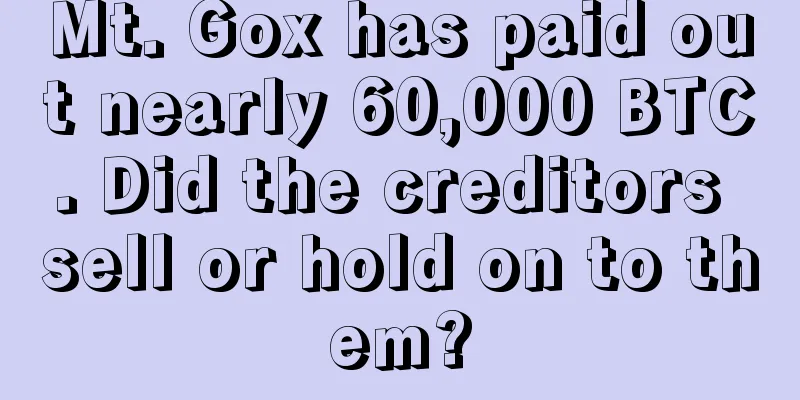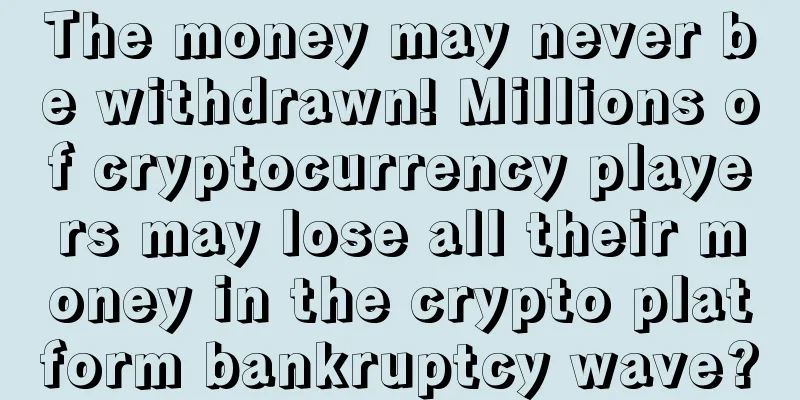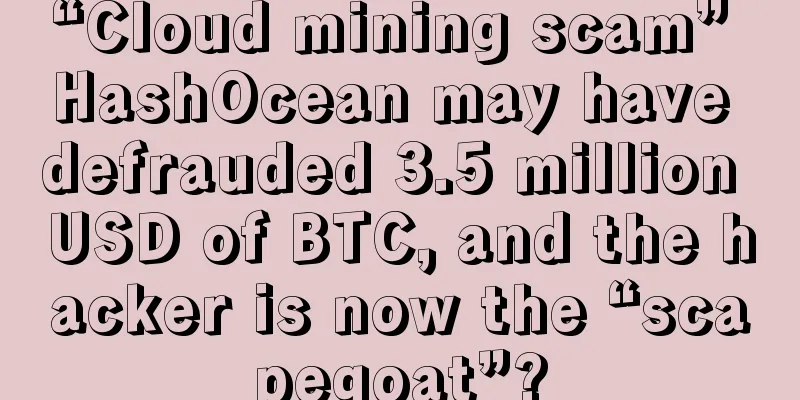Mt. Gox has paid out nearly 60,000 BTC. Did the creditors sell or hold on to them?

Abstract:
1. Mt.Gox payout arrivesAfter more than a decade of legal proceedings, the long-awaited payment of Mt. Gox creditors’ Bitcoins recovered from the collapse of the Mt. Gox exchange has begun. This is a historic event for the Bitcoin industry, and especially for those patient and resilient creditors who have fought a long and hard battle to insist on BTC repayments rather than fiat currency repayments. From a psychological perspective, this represents the final chapter in the major market pressures that the industry has faced since 2013. The total number of recovered tokens exceeds 141,686 BTC, of which nearly 59,000 BTC have been redistributed to creditors, and another 79,600 BTC will soon be added. Kraken and Bitstamp were selected as designated exchanges responsible for redistributing creditors’ funds. Kraken has currently received 49,000 BTC, and Bitstamp has received the first batch of 10,000 BTC. When comparing the size of distributions from Mt. Gox to other large entities over the past two months, we can see that these have eclipsed ETF inflows, issuance to miners, and the German government sell-side. However, it is worth noting that creditors’ efforts to recover tokens have taken so long that this could paint a picture of their likely future behavior:
Therefore, relatively speaking, only a portion of these compensation tokens may actually be sold on the market. However, this idea is based on a certain degree of speculation, and the reality is difficult to measure independently. The selling pressure from the German government in late June was enormous, with over 48,000 BTC sold in a one-month period. However, the market absorbed this supply and the price rebounded from $53,000 to over $68,000. Throughout the Mt. Gox distribution, Bitcoin has traded between $68,000 and $66,000, which may suggest that the number of sellers is smaller than expected and/or that the demand side is relatively resilient. Knowing that Kraken and Bitstamp are both targeted exchanges for these redistributed tokens, we can add more color to this idea using the spot cumulative volume delta (CVD) metric. CVD measures the net difference between spot buy and sell volumes on centralized exchanges (market orders only). If we isolate the CVD metric associated with Kraken, we can see that sell-side pressure has risen slightly following this re-payout event. However, it remains within the typical daily range. As for Bitstamp, we can see a similar story. This provides more evidence for our argument that creditors should probably be viewed as having a long-term holder mentality at this time. If this argument holds true, this is a noteworthy observation, as creditors have a very strong incentive to take profits due to the massive price increase since 2013. 2. Hold on to your coinsBitcoin bull markets naturally attract selling pressure as higher prices incentivize long-term holders to sell some of their holdings for a profit. We can observe this phenomenon through the significant declines in the Supply Last Active 1y+ and 2y+ indicators in March and April. This shows that long-term investors spent and sold BTC to meet new demand during the rise in prices to the all-time high of $73,000. The rate of decline in these curves has slowed recently, indicating that investor behavior is gradually returning to holding.
The Realized Cap HODL Wave indicator helps us isolate the USD wealth locked in tokens that has been held for less than three months. This allows us to assess the inflow demand from new investors. The climax of an optimistic bull market is often marked by the saturation of wealth held by these new buyers, which is also a key point for large-scale withdrawal of funds by long-term holders. The share of wealth held by new investors is now falling and well below typical levels seen during macro market peaks. This highlights a broad shift in investor behavior toward holding positions, but also suggests a general slowdown in new demand since the all-time high of $73,000. If we look at those who have held their coins for 3 and 6 months, we can see a significant increase in their relative network wealth. This again suggests that earlier this year, active investors generally preferred to let their coins lie dormant, waiting for them to develop to a more mature stage. From this, we infer that holding on to coins may be the dominant mechanism for the short-term holder group. If we look back at the other side of the equation, the long term holders, we can examine the behavior of those investors who acquired supply more than 6 months ago. Long-term investors currently hold 45% of network wealth, which is relatively high compared to near the top of the macro cycle. This shows that long-term holders choose to continue to hold coins, and they can be said to be patiently waiting for higher prices to withdraw their funds when the market strengthens. Comparing the total holdings of long-term and short-term holders, we notice a new divergence forming. The supply of long-term holders is increasing, while the supply of short-term holders is decreasing. The chart below shows that the approximate time boundary between long-term and short-term holders is late February 2024, and they acquired tokens around this time, when the price was about $51,000. It is likely that many tokens acquired at the peak of the ETF hype will soon begin to move into long-term holdings, and this divergence may accelerate. Finally, we can use the Long Term Holder (LTH) binary spending indicator to depict and visualize the intensity of holder allocation pressure. Distribution pressure on the long-term holder group is relatively small and is declining. This further fits with our overall thesis that Bitcoin supply is still dominated by strong-conviction long-term investors. For now, holding coins is still the preferred strategy. 3. ConclusionFinally, the long-awaited Mt.Gox payout has begun, a major victory for creditors who fought tooth and nail to be repaid in BTC rather than fiat. Still, given the meteoric rise in BTC prices over the past decade, it can be assumed that there is considerable sell-side pressure on the receiving end. Nonetheless, creditors appear to be demonstrating a long-term holder (or long-term investor) mentality, which could weaken sell-side pressure in the coming weeks. Meanwhile, long-term holders’ balance sheets continue to grow, and the percentage of network wealth they hold remains high compared to previous macro tops, suggesting that the dominant market mechanism has shifted to hodling, with sophisticated investors waiting for higher prices before selling their tokens. |
<<: The Evolution and Future Prospects of Ethereum Staking Ecosystem
>>: The US government may start hoarding Bitcoin. How and why?
Recommend
Why does Ethereum also need inscriptions?
Ethscriptions allows the creation of unique digit...
What are the characteristics of the lucky face in 2016?
Lucky Faces for 2016 One of the lucky facial feat...
Is it good for a woman to have a mole on her forehead? What does it mean?
In daily life, moles are very common. People have...
A Bitcoin trader revealed: After seven years of Bitcoin trading, he went from earning less than 10,000 yuan a month to owning two houses in Beijing
I was attending a Chinese culture training class ...
What kind of husband will you marry?
What kind of husband will you marry? Woman's ...
People who have moles in this position on the back have a bad dual personality!
Which places on the back are bad for moles? As we...
Blockchain startup Fluent can help you solve supply chain management problems
The global import and export business generates b...
Your pinky finger reflects your marital status
In physiognomy, the little finger (also known as ...
RAZER SoftMiner Razer Mining Software
RAZER SoftMiner is the latest silver mining softw...
The history, function and significance of Bitcoin mining pools
Preface This article is an important topic about ...
Fox eyes facial features
Fox Eye Charm Characteristics of fox eyes <br ...
Which people are happier when married in middle age?
Which people are happier when married in middle a...
A woman who loses herself in a man
Women should understand: It is better to rely on ...
Apple App Store launches blockchain games
There are many Bitcoin games in the world, but mo...
What is the impact on the fortune of women who have pierced ears but do not wear earrings?
Although some people are very enthusiastic when t...









